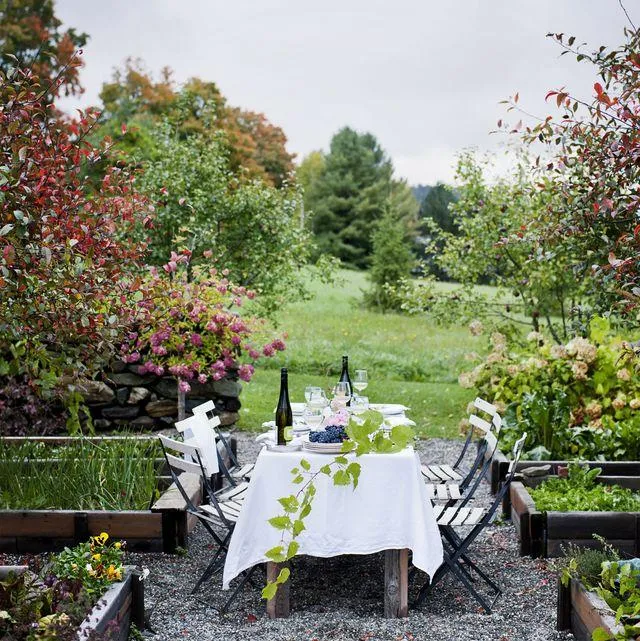Understanding the Various Reasons for Growing Trees Inside Your home
A search for “inside house trees” likely indicates curiosity about bringing the natural beauty of trees indoors. There are several motivations one may have for incorporating greenery within the home. Below, I’ll explore some of the top reasons people choose to cultivate trees inside, as well as considerations and recommendations based on my experience gardening.
Aesthetic Appeal
- Adding visual interest: Trees work well as decorative accents that draw the eye upwards and make a space feel larger. Their branches and foliage can soften rigid architectural lines.
- Bringing the outdoors in: Growing houseplants, including small trees, makes indoor areas feel more lively and connected to nature. It’s a way to incorporate living elements that blur the boundary between indoors and out.
- Customizing interior design: Trees allow customization of color, texture, and form to complement specific design styles. Their natural aesthetic acts as a living artwork that retains visual appeal for years.
From my experience, decorative indoor trees like money trees, mini date palms, and dwarf banana trees stand out as especially versatile and low-maintenance choices. Their elegant forms provide visual pop without overcrowding a space.
Improving Indoor Air Quality and Health
Scientific research has demonstrated that trees and other houseplants can effectively remove toxins from indoor air. According to studies, they are capable of filtering out formaldehyde, benzene, and trichloroethylene – common chemical pollutants found in many household products.
Specifically:
– Spider plants, Chinese evergreens, and English ivy make excellent all-around air purifiers.
– Dracaena species, palms, and peace lilies are among the best plants for removing benzene and formaldehyde.

– Dwarf date palms are champion performers when it comes to filtering trichloroethylene from the air.
So bringing trees and other greenery indoors can potentially reduce exposure to harmful volatile organic compounds. This could positively impact respiratory health over the long run.
Adding Freshness and Humidity
Plants introduce natural moisture into dry indoor air through transpiration. Trees with broad leaves like ficus or dieffenbachia are especially good at upping humidity levels. This has benefits like easing respiratory conditions and preventing static shocks.
At the same time, they freshen indoor air with their natural aroma. To my nose, citrus trees like Meyer lemon and calamondin have an especially refreshing fragrance. Their bright flowers and fruits also lift the spirits!
How’s that for size? Here’s a few more points about indoor trees that may interest our readers:
Room for Personal Expression
Houseplants don’t just passively improve interior design – they can also allow personal expression. For example, a bonsai tree is a creative mini landscape that reflects the owner’s artistic vision. Or an espaliered fruit tree trained against a wall turns a practical plant into a conversation piece.

Basically, trees cultivated indoors become an extension of their caretaker’s personality. From my experience, this fosters a fulfilling connection to green, growing things even in an urban setting.
Sustainably Increasing Property Value
Get this – recent studies show houseplants may increase a home’s sale price by up to 10%! Indoor trees add curb appeal and reinforce the perception of a healthy, low-maintenance home. Their presence suggests attention to aesthetic detail and care for the environment.
As an aside, indoor citrus trees can kind of save money too. Not only do they scent the air deliciously, but their fruit is perfect for baking or snacks – kind of like having a tiny organic supermarket indoors!
Providing Therapeutic Relaxation
Simply gazing at or caring for potted trees may help reduce stress, anxiety, and low moods. Research links plant presence to decreased cortisol levels, lowered blood pressure, and improved focus/mental clarity.
From experience, I’ve found bonsai, bamboo, and cast iron plant especially calming to observe due to their minimal yet harmonious forms. Their quiet growth fosters a sense of serenity. Science seems to back what gardeners have intuited for ages – nature nourishes the soul.
So in summary, bringing the outdoors indoors via trees touches on aesthetic, eco-friendly, and even financial and mental wellness priorities. Their benefits span improving air quality, adding appeal, and allowing creative ways to connect daily with living things. Though low-light conditions may restrict species variety, creative indoor forestry remains highly worthwhile. What do you think – have you brought trees under your own roof? I’d love to hear your experiences too! Feel free to share in the comments.

Choosing the Perfect Indoor Tree
| Tree Type | Size | Water Needs | Light Requirements |
|---|---|---|---|
| Chinese Evergreen | Small to Medium | Allow soil to dry out between waterings | Bright indirect light |
| Rubber Plant | Medium to Large | Water when top inch of soil is dry | Bright indirect light |
| Peace Lily | Small to Medium | Water when soil is dry | Bright indirect light |
| Dracaena | Small to Large | Allow soil to dry out between waterings | Bright indirect light |
| Ponytail Palm | Small to Medium | Water when top inch of soil is dry | Low to medium indirect light |
FAQ
-
What types of trees grow well indoors?
Trees like the dwarf Ficus and money trees tend to do well inside ’cause they don’t need a whole lot of space. Chinese evergreens and Boston ferns also kinda thrive in indoor conditions.
-
How much sunlight do indoor trees need?
While each tree species has its own sunlight needs, most indoor trees prefer bright indirect light. Direct sun through a south-facing window is generally okay for a few hours every day. Some trees, like snake plants and peace lilies, will survive in low light spots too. Too much or too little sun can cause issues over time.
-
How often should indoor trees be watered?
The frequency of watering depends on different factors, but as a basic rule, check the soil every 7 to 10 days. Stick your finger in the soil, if the top inch is dry, it’s time to water. During warmer seasons when trees are actively growing, they may need water every 5 to 7 days. Under-watering is usually safer than over-watering for indoor trees.
-
How do you fertilize indoor trees?
Most houseplants only need fertilizer during their main growing seasons in spring and summer. You can use a diluted liquid houseplant fertilizer according to label directions every 4 to 6 weeks. Another option is to use fertilizer spikes which slowly release nutrients over several months. However, too much fertilizer can damage tree roots, so go easy on the feedings.
-
How often should indoor trees be repotted?
As a basic rule, repot a tree if its roots have filled the container. Signs that it’s time are slowed growth, wilting even when the soil is moist, or if roots are emerging from the drainage holes. Repotting usually occurs every 1 to 3 years. It’s perfectly okay to leave a tree in the same pot for more than one season if it seems happy.

-
How do you prune an indoor tree?
Pruning helps shape the plant and keeps it a suitable size for its space. Use clean pruning shears or scissors and cut just above a leaf joint or node. You can trim off dead or damaged portions whenever needed. For some trees, light annual pruning promotes bushiness. Check online guides for tree-specific pruning advice. Proper pruning helps trees stay healthy indoors for years.
